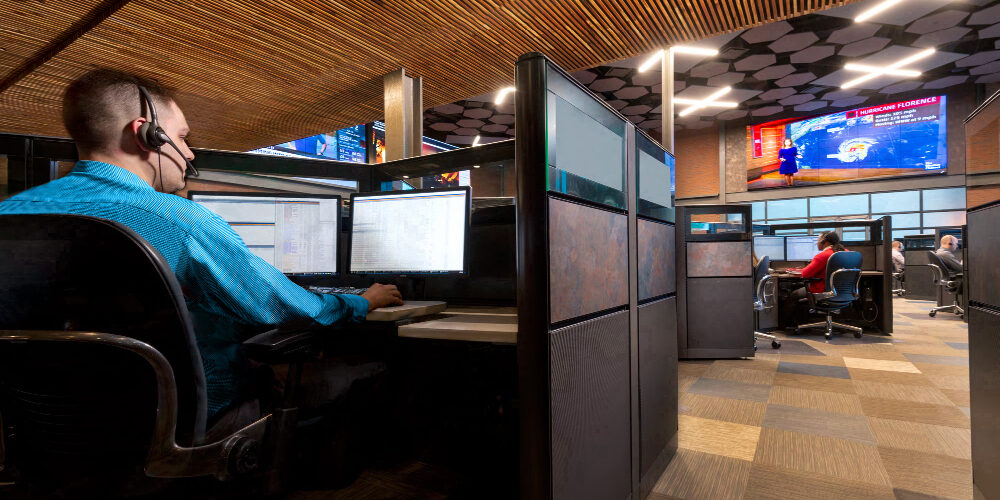Why the New AVS-01 Alarm Standard Could Be a Gamechanger
AVS-01 is the first standard to look at many variables and disparate data and use that to ascertain new priorities that can be used by monitoring centers to vary their workflow and notification processes and methods.

The AVS-01 standard will help prioritize the 15% of alarms that are not cleared by other methods. (Image courtesy of Rapid Response Monitoring)
I have been in this business since 1979 and have seen a lot of changes, new ideas, new products, new ways of doing things — including determining the validity of an intrusion alarm.
When I first started and worked for a small full-service alarm company with its own central station, the policy was to dispatch immediately when you received an alarm; there were no calls, no two-way audio, nothing. An alarm and a dispatch, and then you notified the call lists.
Over the 40-plus years since, we have seen new standards come into play that specifically address the unnecessary calls for service. One of those was CP-01, which is still in play today and is managed by SIA. This standard has false alarm reduction requirements for panel hardware but also for the programming of the hardware.
Just a few years after the implementation of CP-01 I was given its statistics during a call, and they were staggering, particularly regarding the difference to law enforcement it was making in what really had been a very short amount of time. We take for granted things like panels sending in cancel signals or having a short “abort-delay” time programmed into the panel, but all of these changes have made a significant difference.
A few years after CP-01 was introduced, the Central Station Alarm Association (CSAA), now The Monitoring Association (TMA), published CS-V-01, which is a procedural standard that requires central stations to follow a prescribed method of verifying an alarm and what signals to use along with a notification process.
Once this was implemented, and in most cases required by many ordinances, the calls for service really dropped. Today, with CP-01 and CS-V-01 in place, most modern monitoring centers have a clearance rate of well over 85%, which compared to 1979 when I got in the business and we dispatched everything, is a monumental improvement.
What hasn’t really changed over the years is that even though we have reduced calls for service by 85%, what does get dispatched is, for the most part, not a crime in progress. Our industry has been working very closely with public services, and thanks to the hard work of our trade associations like SIAC, TMA, ESA and many others, we have an excellent record of working well together.
Over the last three years there has been a group of professionals from both the security industry and public services working on a new standard that will help both sides start to work on having a way to prioritize the 15% of alarms that are not cleared using the methods described above. That new standard is AVS-01.
AVS-01 is the first standard to look at a lot of variables and disparate data and use that to ascertain new priorities that can be used by monitoring centers to vary their workflow and notification processes and methods. In turn, public services can use these prioritized results to help manage their assets and processes in the field.
Within the standard, there are rules and methods that determine what factors will determine how an event can get from one priority to another. All of the methods allow for obvious input, like audio and video, but also for other data sources like weather, artificial intelligence, information for other systems like access control or energy management, crime statistics, alarm history, and so on.
There are five priorities that are defined in the standard:
Priority Zero: These are alarms where there is no reasonable belief that a crime is in progress, examples of which are an alarm with a cancel or opening signal, a valid card reader event, facial recognition or other ways to determine an authorized person is onsite.
Priority One: These are what all alarms are today; an alarm is received, but there is no other data beyond the alarm signals.
Priority Two: These are alarms in which there is significant data that a person is onsite. This could be audio or video but could also be determined by a number of other things that are designed to detect human presence, for example energy management systems, cellphone detection, WiFi or LiDAR, along with a whole host of analytics.
Priority Three: These are alarms in which there is data to validate that an intrusion is in process. This takes Priority Two to a higher standard but with many of the same analytics, along with audio and video, and can determine that the human on site is not authorized to be there.
Priority Four: These are alarms where there is clear evidence that a threat to human life is present. This would include things like video, weapon detection or threatening audio.
In the standard there is much more information on how all this works, along with examples and charts and diagrams. The standard, as of this writing, has gone through a preliminary public review, which was done in advance of the formal public review that’s required by ANSI.
The current timeline is to respond to the initial comments, advance to the public review process this summer and have the entire project done by the end of the year, at the latest.
It’s really important to understand that the group of more than 50 people participating in the development of the standard represent many different sectors, including, law enforcement, public service, service providers, platform providers, alarm companies and central stations, just to name a few. Overall, this was a very well-rounded and well-represented group of professionals that spent the better part of two years doing this work.
I believe that this is going to be one of the most significant changes in the past 50 years on how the alarm industry and public service work together. It will allow alarm companies to have several new offerings and value propositions, and it will allow public services to more effectively manage their assets and processes.
Ultimately, it will benefit subscribers when they really do need a coordinated response. You can find many of the discussed standards at tma.us/standards/tma-standards.
If you enjoyed this article and want to receive more valuable industry content like this, click here to sign up for our FREE digital newsletters!

Security Is Our Business, Too
For professionals who recommend, buy and install all types of electronic security equipment, a free subscription to Commercial Integrator + Security Sales & Integration is like having a consultant on call. You’ll find an ideal balance of technology and business coverage, with installation tips and techniques for products and updates on how to add to your bottom line.
A FREE subscription to the top resource for security and integration industry will prove to be invaluable.









Morgan…RE: SS&I article … Why the New AVS-01 Alarm Standard Could Be a Gamechanger.
Some of us believe AVS-01 is more of the same… only a self-serving band-aid when oxygen is needed, while membership net worth dissolves. AVS-01 still requires the monitoring source to evaluate the alarm status and apply professional judgement when selecting alarm site response. And, as now written, the errors and omissions of the staff at the monitoring center will still cause lots of Unnecessary Police Response, while the false alarm fees will still be levied onto the citizen alarm site. Not much will change with AVS-01. The monitoring source has always been the lawful “perpetrator”, not the customer alarm site, but the citizen customer pays the unlawful fines. If the perpetrator, monitoring source, is levied the fines, nearly all requests for police response will be withheld until AVS-01, Priority 3 & 4. FALSE ALARM PROBLEM SOLVED if monitoring source is responsible for fines/fees. Note, several cities recently started alarm site rebates of fines/fees that were caused by their monitoring firm, the perpetrator.
Source: Lee Jones; Support Services Group